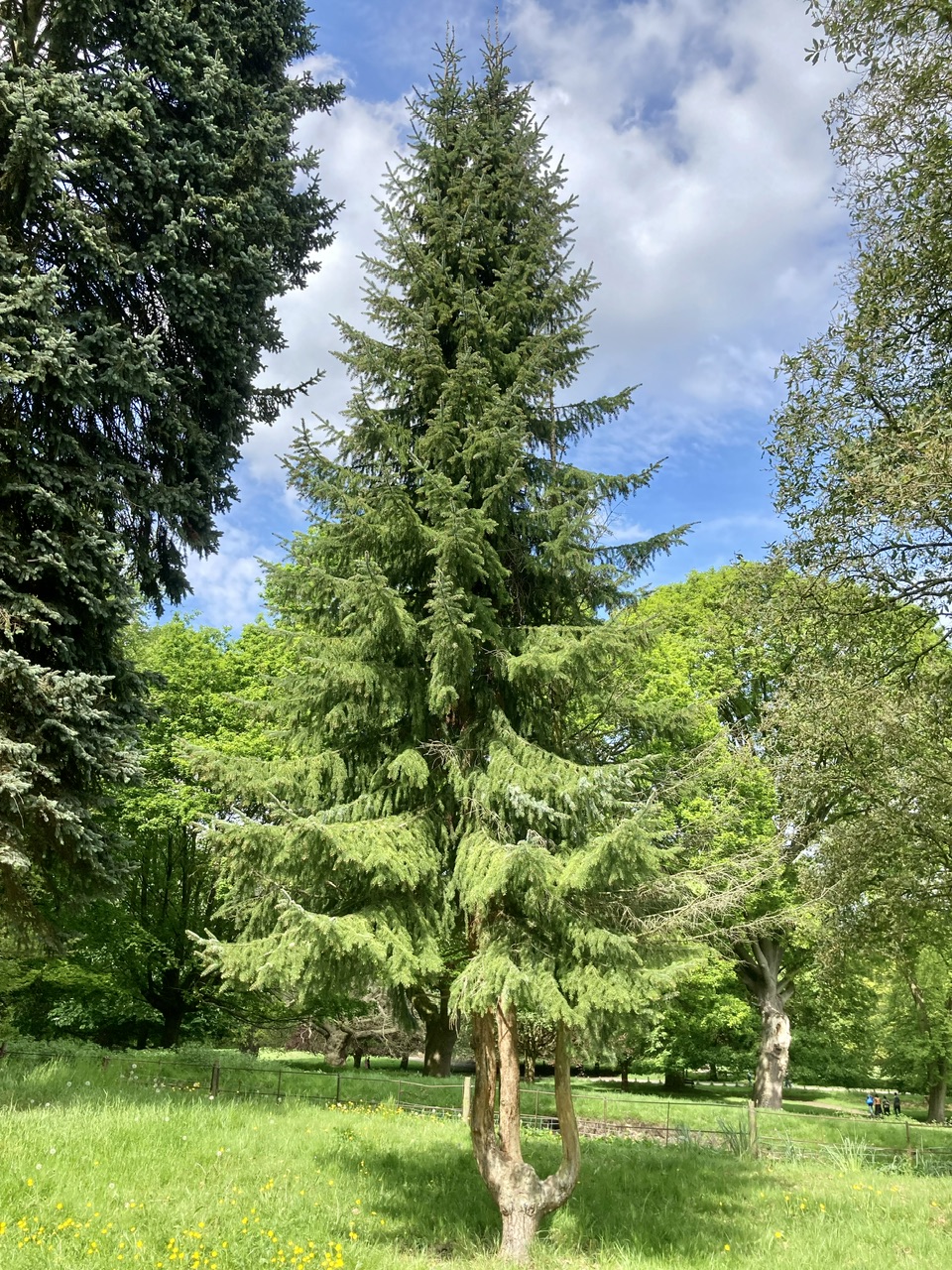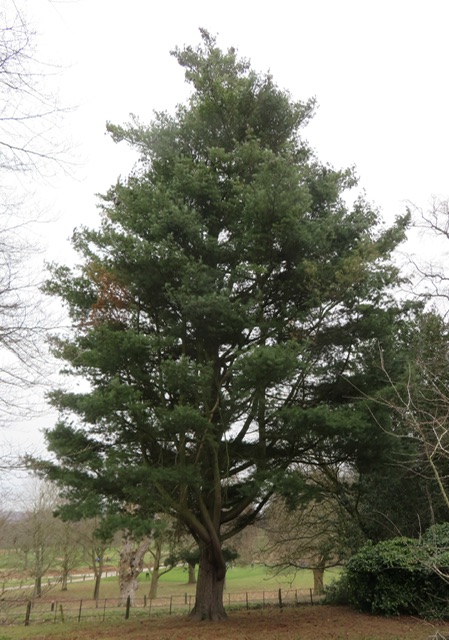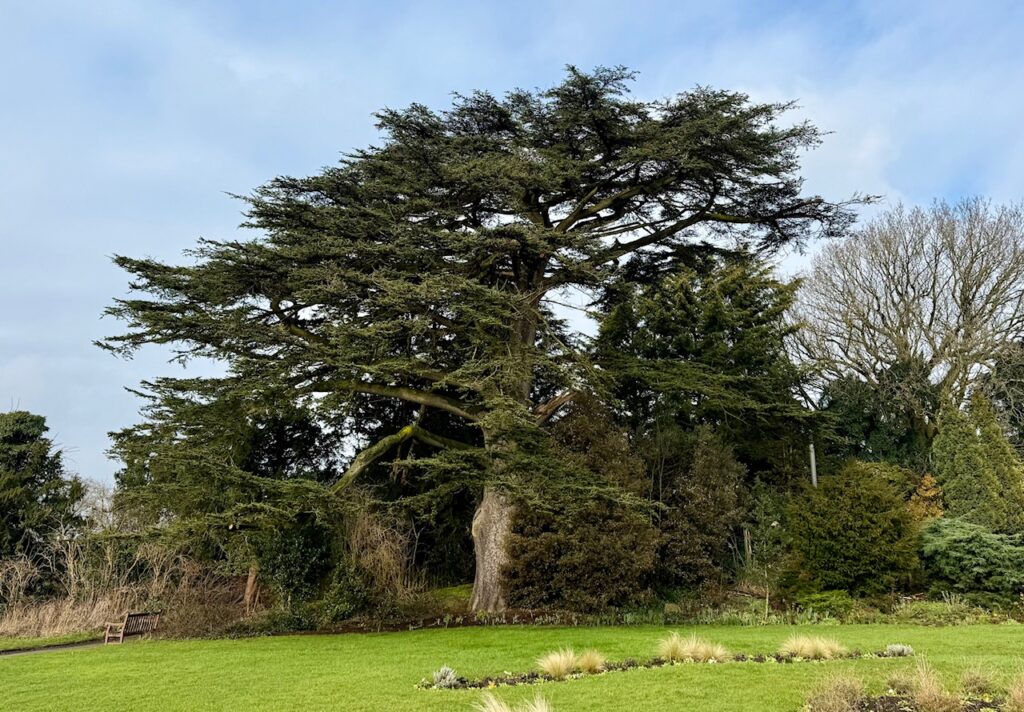Conifers are easily recognised by their needle-like or scale-like leaves and their cones, which bear their seeds. Unlike deciduous trees that lose their leaves in autumn, most conifers retain their foliage year-round.
Conifers emerged millions of years before broadleaf trees. Fossil records indicate conifers existed during the Carboniferous period, while flowering plants (which include broadleaf trees) appeared much later.
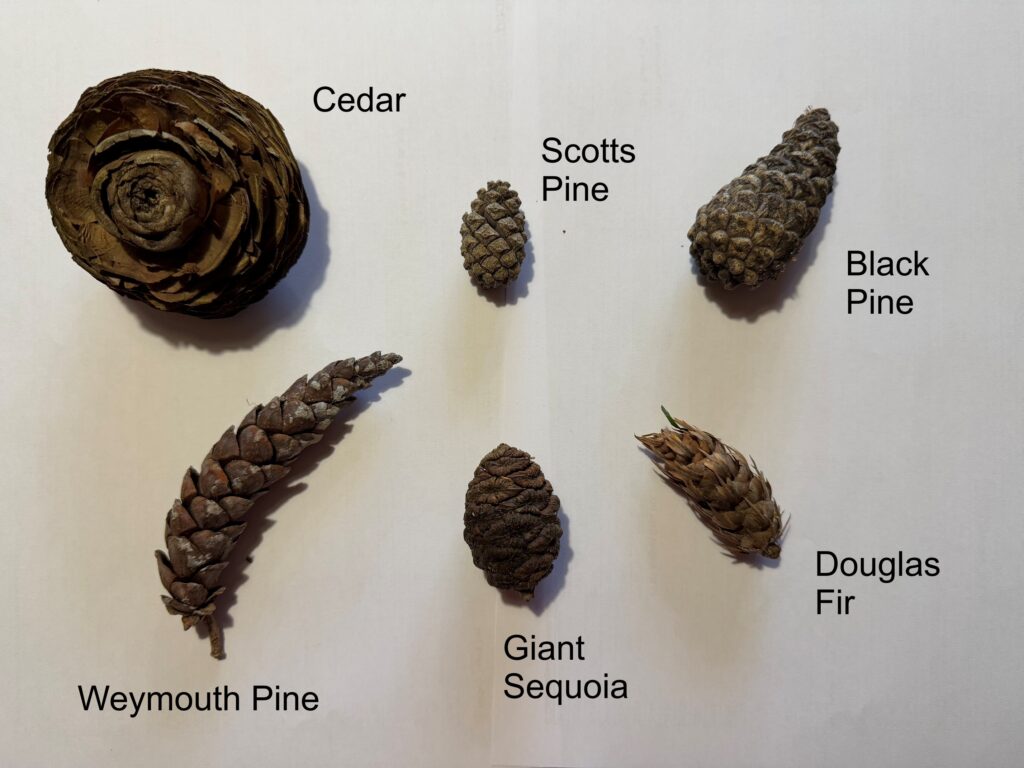

Evergreens
Find out about 20 of the most significant Evergreens and Conifer trees in Wollaton Park.
Conifers emerged millions of years before broadleaf trees and most conifers keep their leaves year-round, unlike deciduous trees (mostly broadleaved) that shed them in autumn.
Pine
Black Pine
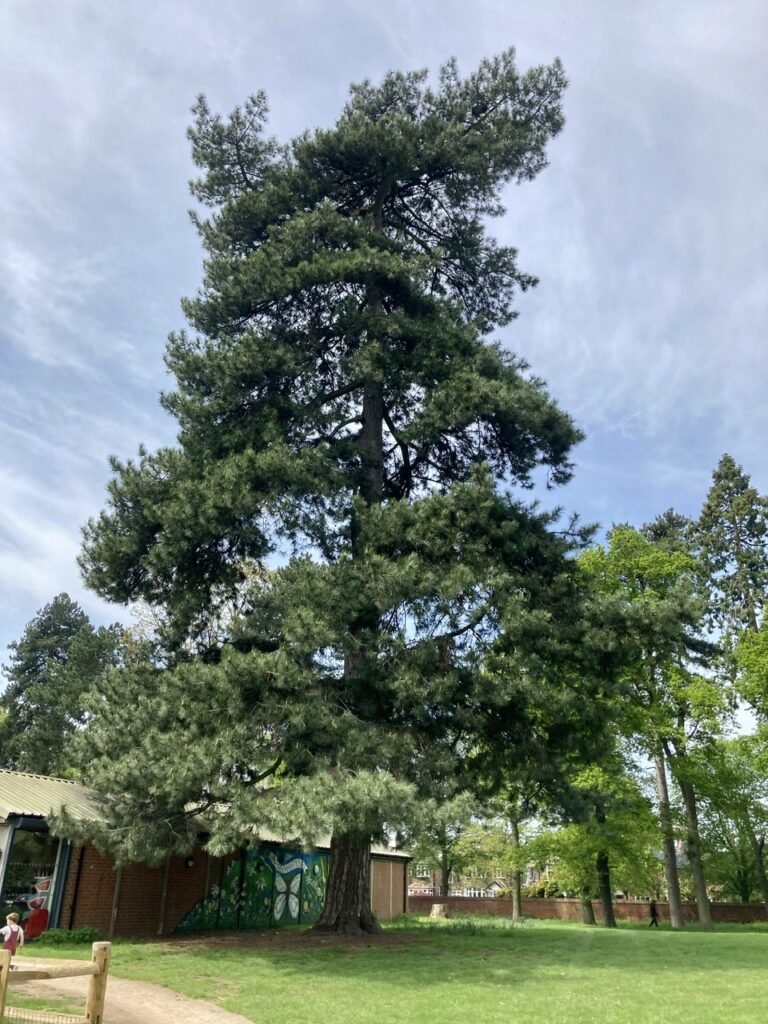
Pinus nigra.
The needs are pairs, and slightly twisted. The cones have a distinctive “bump” in the middle of each scale.
The tree shown is probably an Austrian Pine Sub-species. The others nearby are probably Corsican Pine subspecies. Thought to have been planted in the park between 1860 and 1880.
Scots Pine

Pinus sylvestris.
Needles are short and twisted, and grow in pairs; cones are small and round; bark is reddish-brown and scaly.
Its timber has been used for centuries in construction, shipbuilding, and for producing resin and turpentine
Spruce
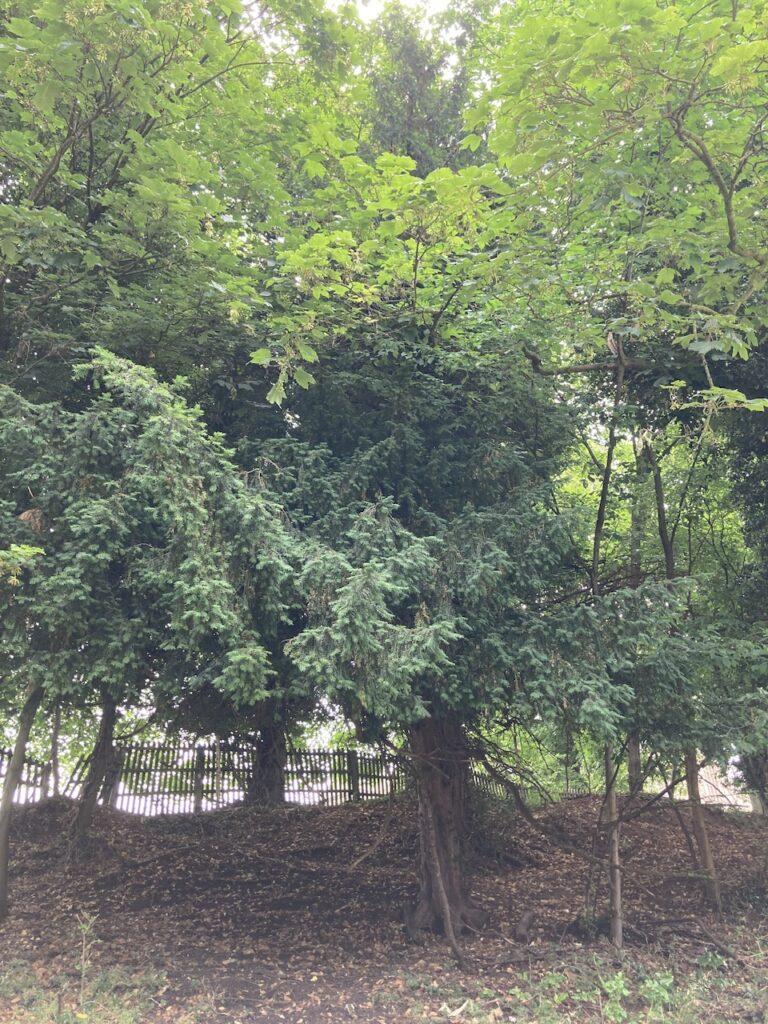
Picea.
Spruce trees are evergreens with needle-like leaves that grow in clusters. They have a conical shape and can grow to be very tall. Spruce trees are often used for Christmas trees.
Blue Colorado Spruce
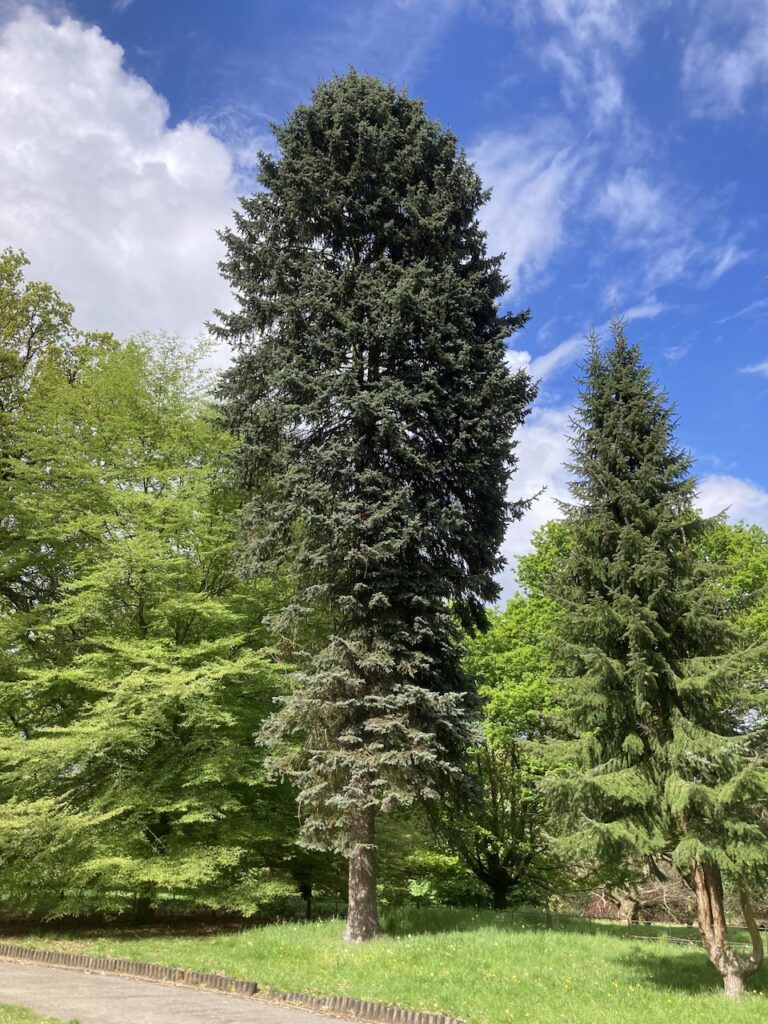
Picea pungens f. glauca.
The needles of the blue Colorado spruce are a distinctive blue-grey colour, with a stiff, sharp texture, and are arranged in a spiral pattern around the branches.
Serbian Spruce
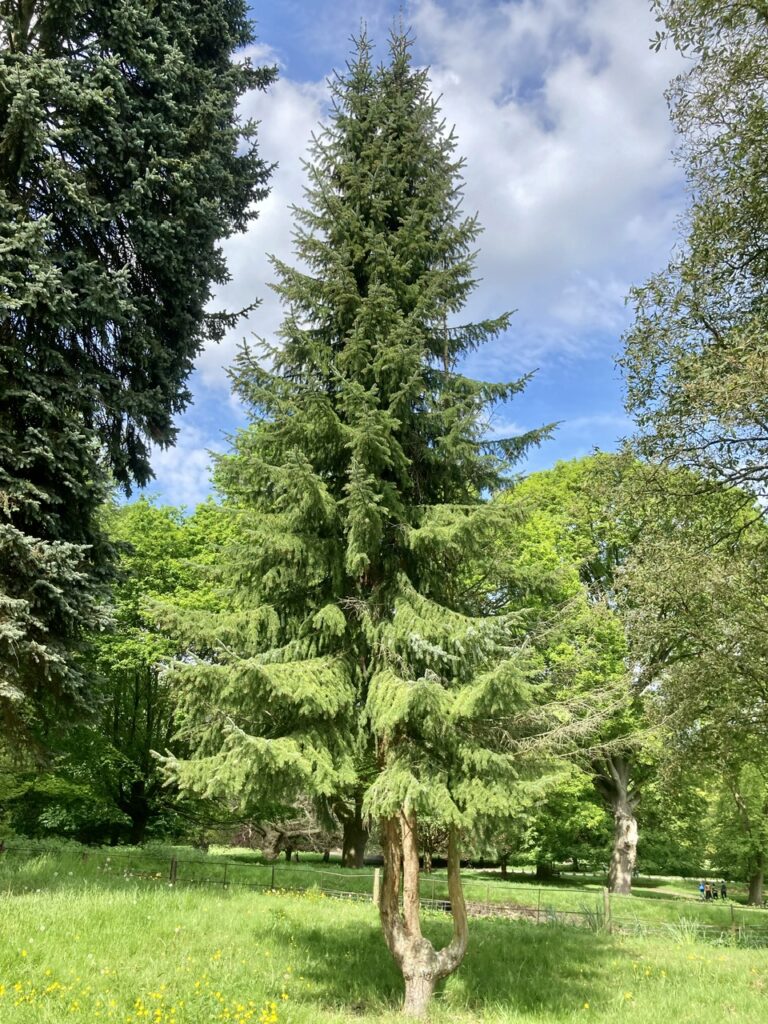
Picea omorika.
Serbian Spruce has a distinctive pyramidal shape and grows to a height of 50-60 feet. The needles are dark green and glossy, with silvery undersides. The cones are purple when young and turn reddish-brown as they mature.
They have survived as a species, relatively unchanged, for over 50 million years.
Douglas Fir
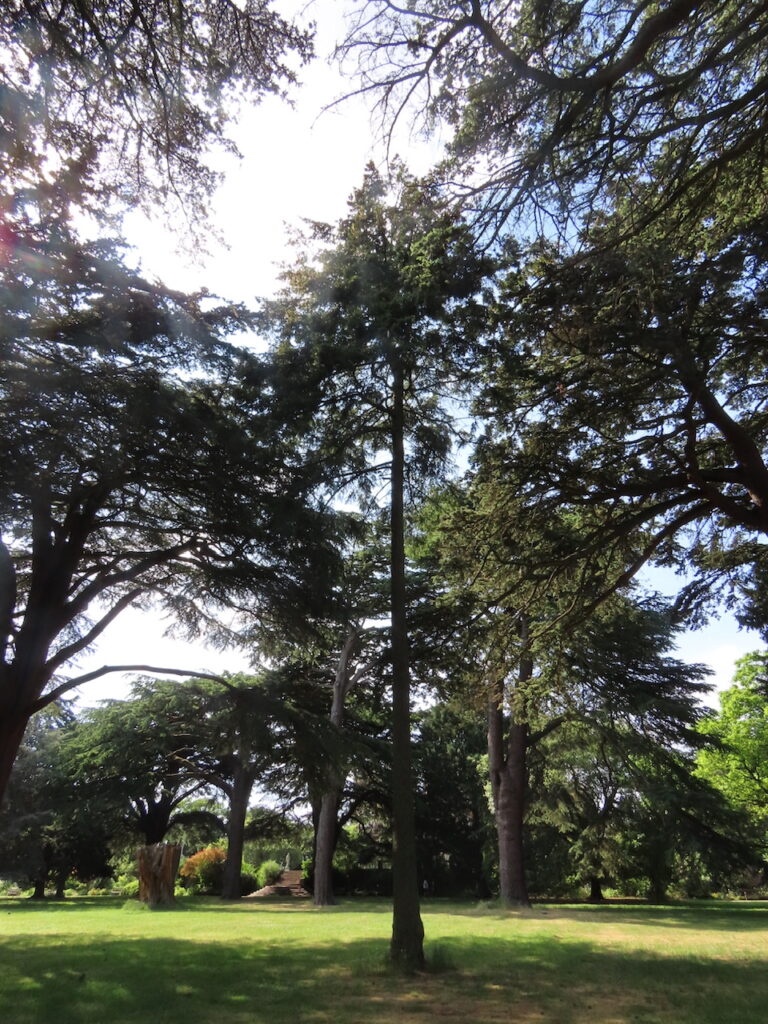
Pseudotsuga menziesii.
Douglas fir is a tall evergreen tree native to western North America, with a conical shape and a straight trunk covered in thick, scaly bark.
The cones point down, which is unusual among fir trees, and have a three-tongued growth on each scale.
It will typically live for 650 years.
There is also some on the far side of the lake.
Cedar
A common way to tell the 3 main species of Cedar apart is by the tips of the branches. In Cedar or Lebanon, they are typically horizontal, unlike the Atlas Cedar, where they ascend and the Deodar, where they droop. Remember LAD:
- Lebanon – Level
- Atlas – Ascend
- Deodar – Droop
Note: The Incense Cedar and Western Red Cedar, despite their common name, are not Cedar trees, but Cypress Trees.
Atlas Cedar

Cedrus atlantica.
Needles are green and grow in clusters on short shoots; cones are barrel-shaped and up to 6 inches long; bark is grey and rough with deep furrows.
The branches typically point upwards (ascending).
Blue Atlas Cedar

Cedrus atlantica f. glauca.
Needles are blue-green and grow in clusters on short shoots; cones are cylindrical and up to 4 inches long; bark is grey and rough with deep furrows.
The picture shown is Tree 26 in the Mini Arboretum.
Deodar
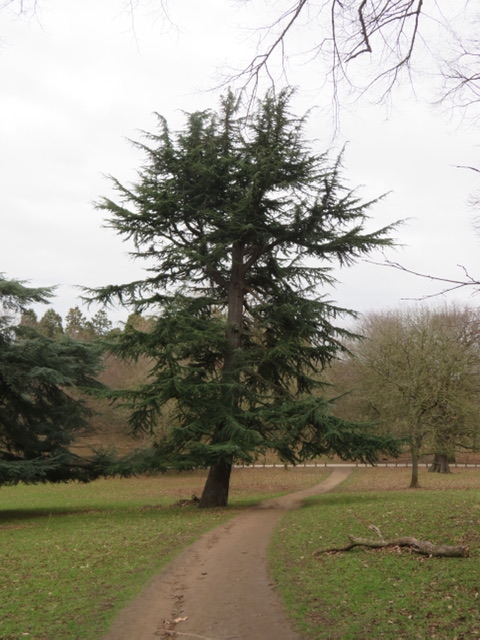
Cedrus deodara.
The Deodar can grow up to 60 meters tall with level branches and drooping branchlets. The leaves are needle-like, mostly 2.5–5 centimetres long, and vary from bright green to glaucous blue-green in colour.
Also known as Himalayan Cedar, the name derives from a Hindu word meaning “wood of the Gods”.
The wood has insect-repellent properties and is used widely for construction in Asia.
The picture shown is Tree 27 in the Mini Arboretum.
Cypress Family
Lawsons Cypress
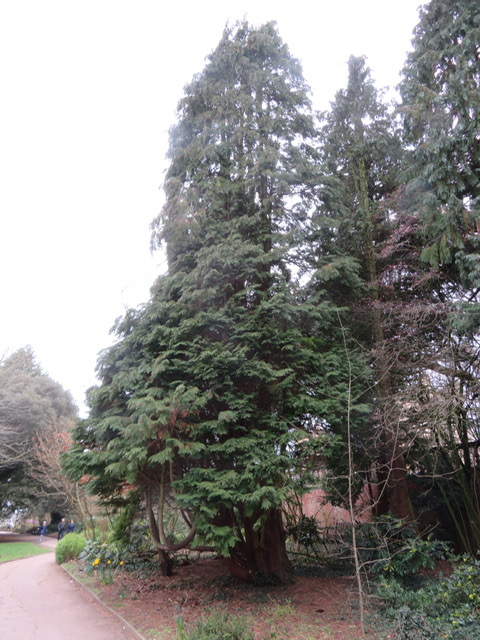
Chamaecyparis lawsoniana.
Lawson’s cypress has a narrow, conical shape when young, but matures into a broad, irregularly shaped tree that can reach up to 70 meters in height. Its leaves are scale-like and have a blue-green colour, and it produces small, woody cones that are about 1.5 centimetres in length.
Swamp Cypress
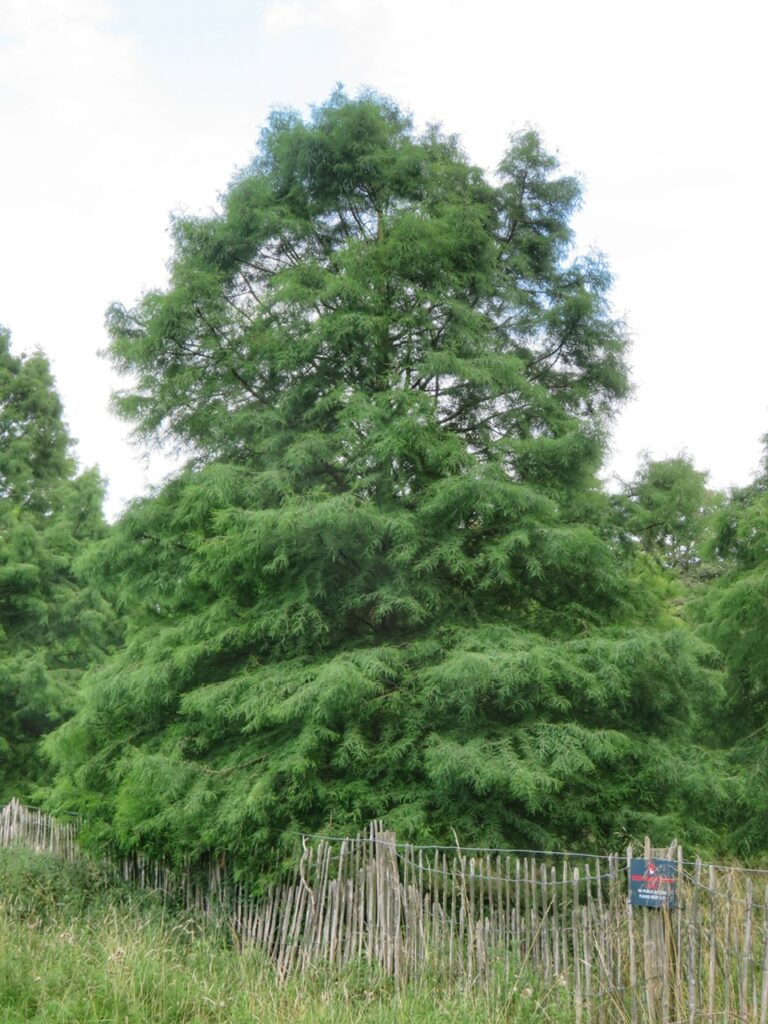
Taxodium distichum.
The swamp cypress is a coniferous tree that can grow up to 40 meters tall and has a trunk diameter of up to 2 meters. It has a pyramidal shape and fissured red-brown bark. The leaves are pale green and yew-like, and they turn attractive rust-brown in autumn.
Giant Sequoia
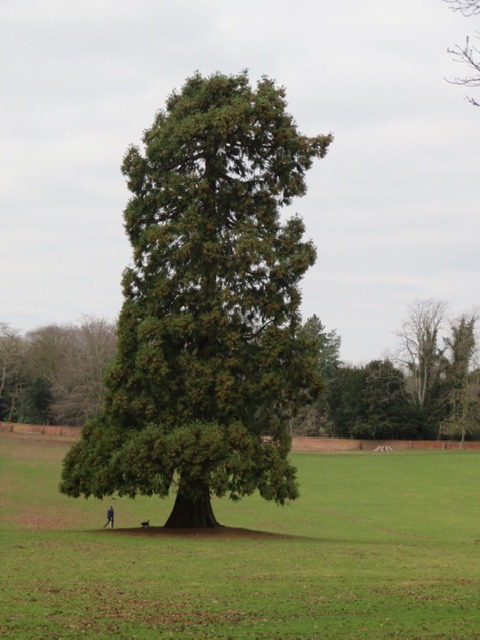
Sequoiadendron giganteum.
Also known as the Wellingtonia Tree.
The bark is reddish-brown, thick, and fibrous, providing protection against wildfires and other disturbances. The leaves are needle-like and arranged in spirals along the branches.
The tree in the photo is estimated as 25m tall.
Dawn Redwood
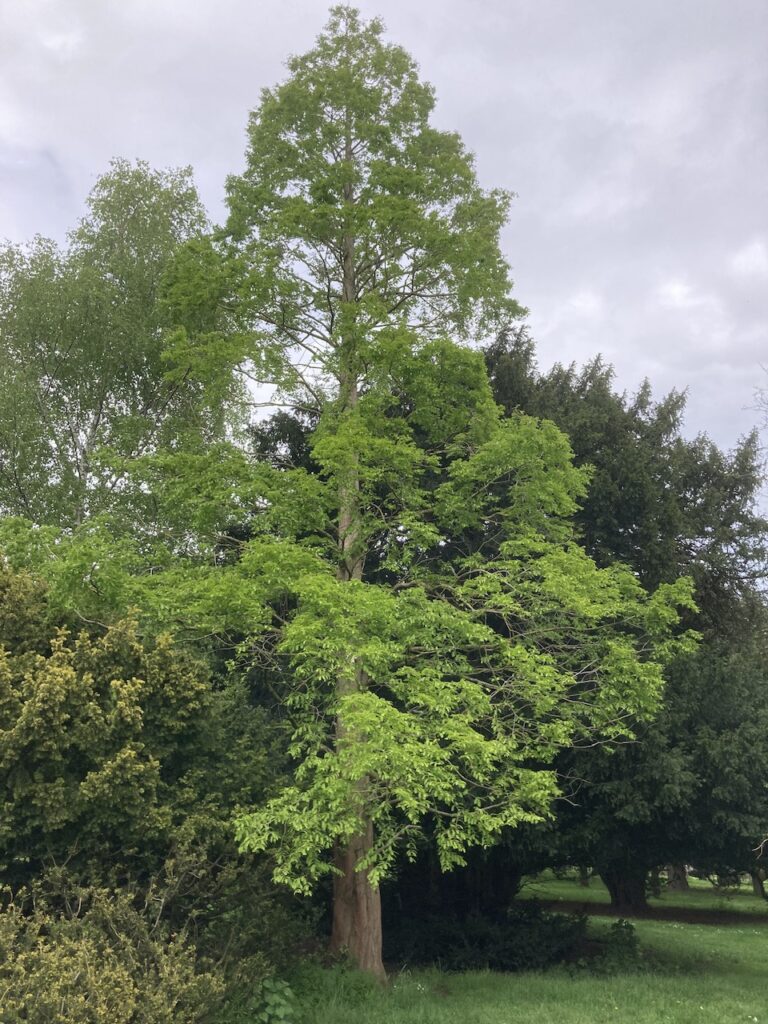
Metasequoia glyptostroboides.
The Dawn Redwood (also known as Water Fir) is a deciduous conifer that can grow up to 20 meters tall and 10 meters wide. It has a straight trunk and feathery foliage that turns a brilliant red in autumn.
It was thought to be extinct, re-discovered in 1941, and subsequently propagated and redistributed by Kew Gardens, a likely source of this specimen.
Western Red Cedar
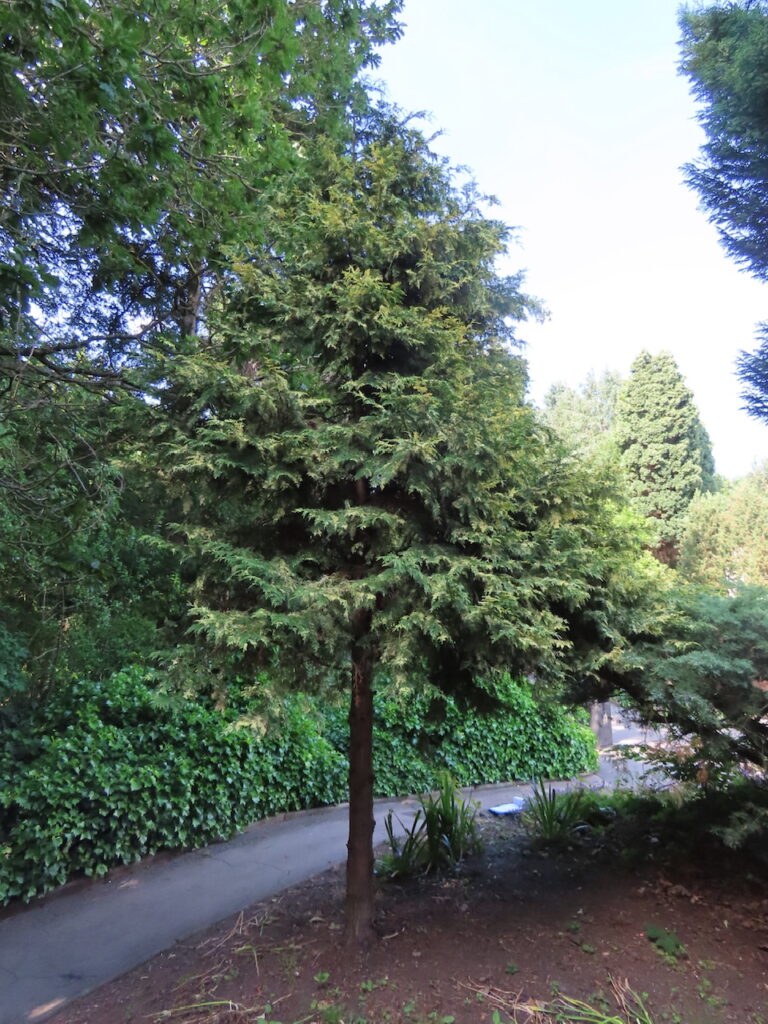
Thuja plicata.
The Western Red Cedar is a large, evergreen tree that can grow up to 60 meters tall. It has a reddish-brown bark that flakes off in thin sheets. The leaves are small and scale-like, and they are arranged in spiral rows on the branches.
The photo is a Zebrina Western Red Cypress, a variegated form.
Incense Cedar
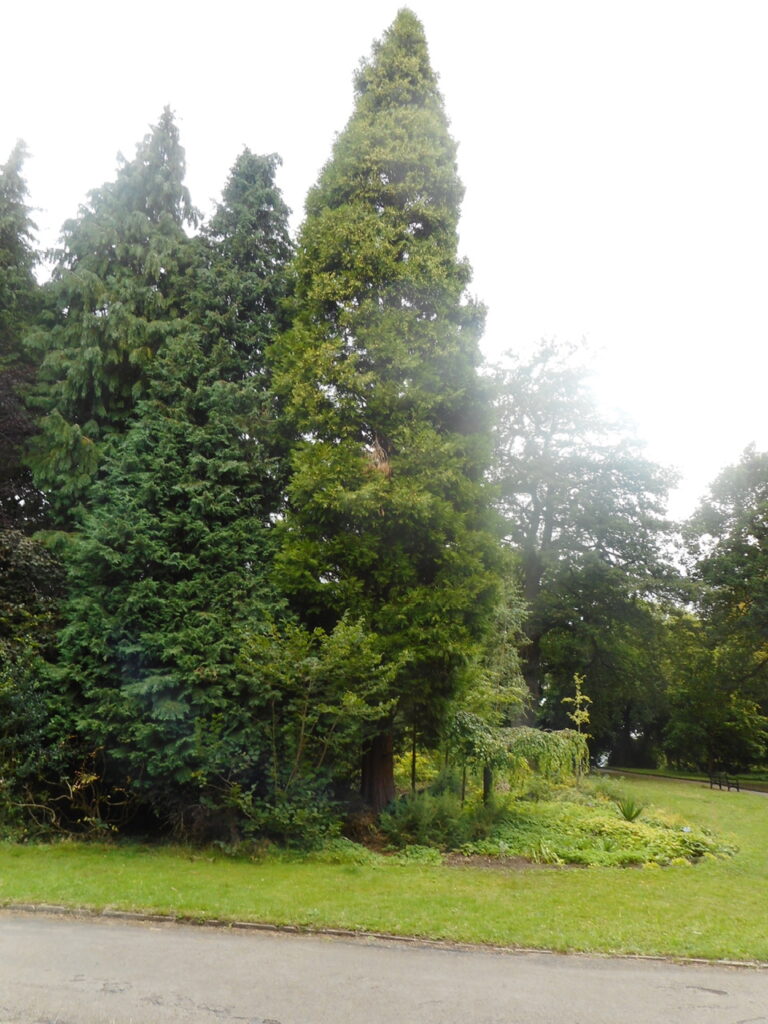
Calocedrus decurrens.
The Incense Cedar tree is a coniferous tree that can grow up to 50 meters tall and has a trunk diameter of up to 2 meters. It has a pyramidal crown and drooping branches. The leaves are needle-like and 2-3 centimetres long. The cones are small and brown.
Yew Family
English Yew
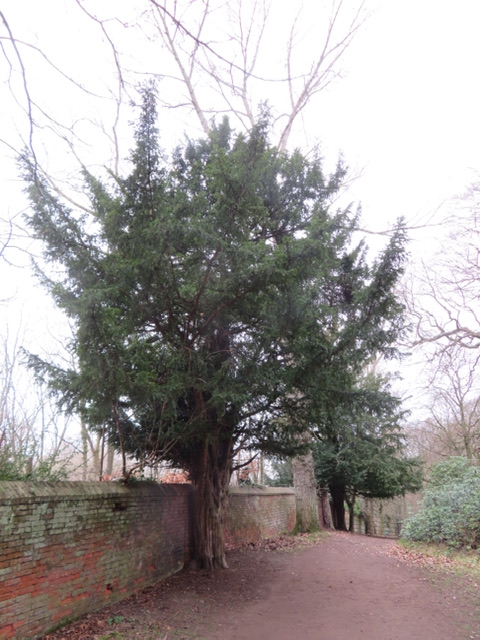
Taxus baccata.
Yew trees are known for their dark, dense, and finely-textured foliage, which consists of flat, needle-like leaves that grow in two parallel rows along the stems. The leaves are dark green on the upper surface and lighter green on the lower surface.
Unusually for conifers, they do not have cones, but berries.
Often used for hedging and topiary.
Golden Yew
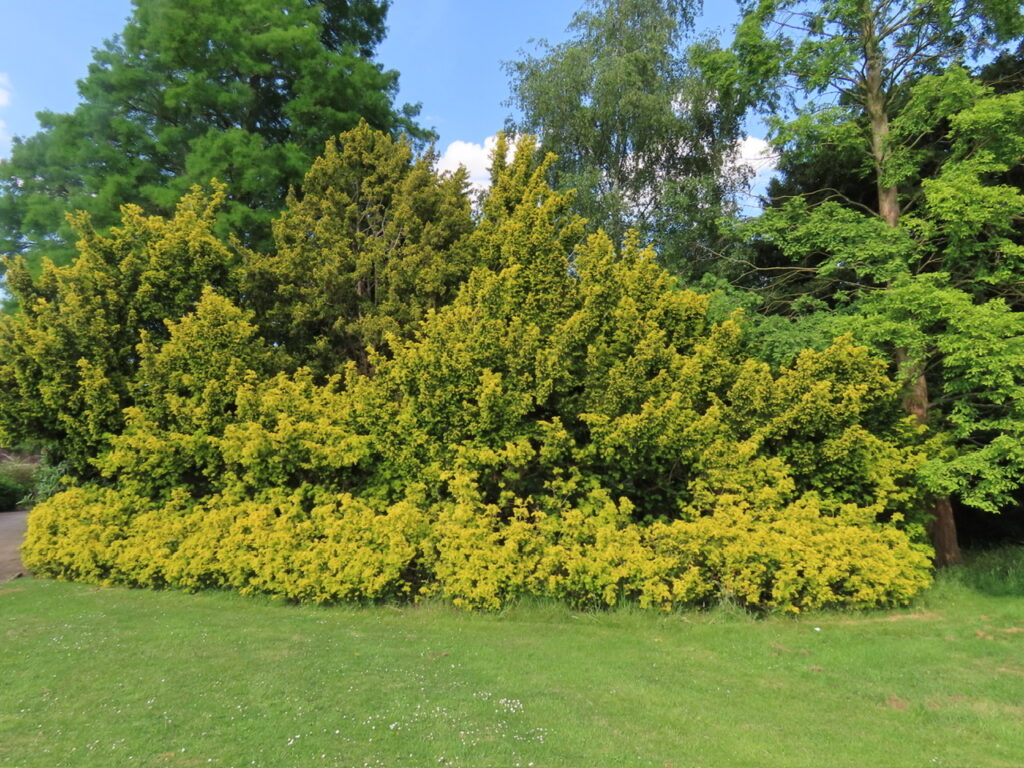
Taxus baccata f. aurea.
Golden yew is a slow-growing, evergreen small tree with golden yellow foliage. It is a hybrid of English yew and Japanese yew.
Often used for hedging and topiary.
Yew trees are very long-living, with some 5,000 years old. Fossil records have been found of a spear made from a Yew tree over 400,000 years ago, before modern humans.
Photographs used in the Tree Galleries were taken in Wollaton Park and are reproduced with the original artist’s permission.
Copyright © for each picture remains with the original artist, who is duly acknowledged for their contribution.
Contributors include Colin Robbins, Wendy Martin, and Chris Golightly.
Tree descriptions were generated with the assistance of Google Bard.

